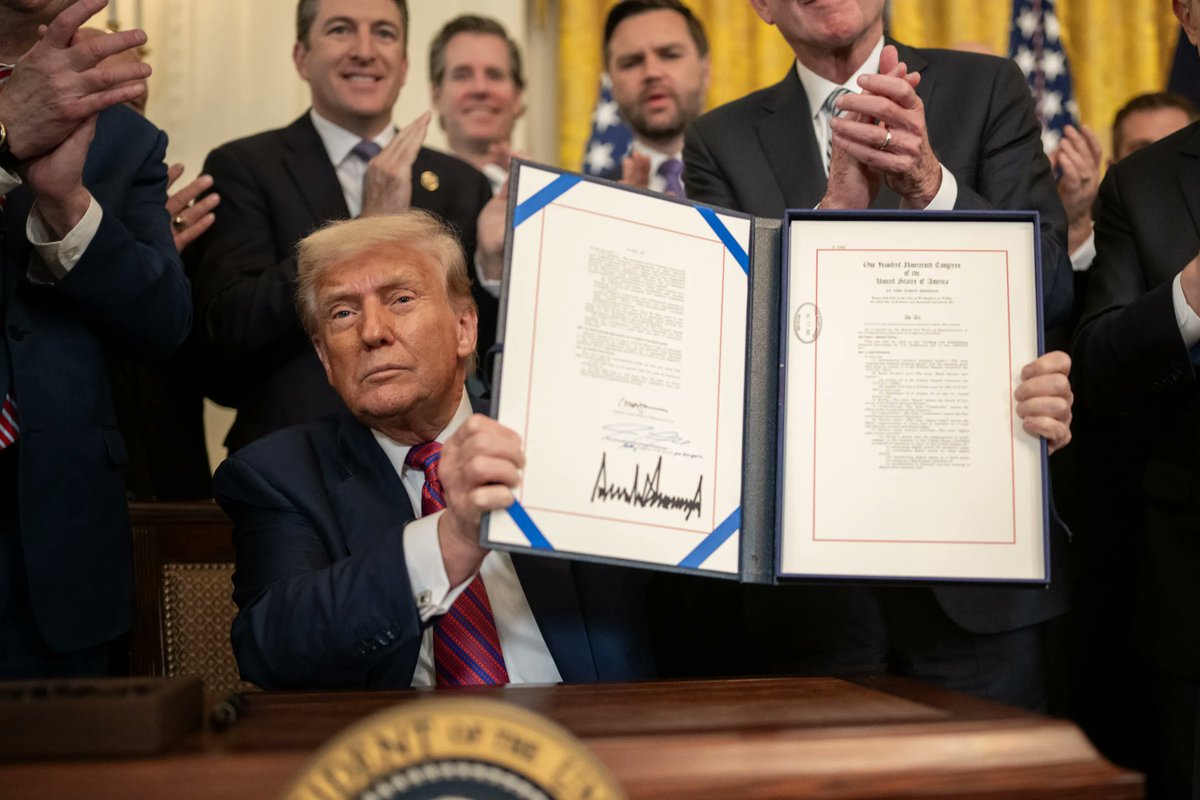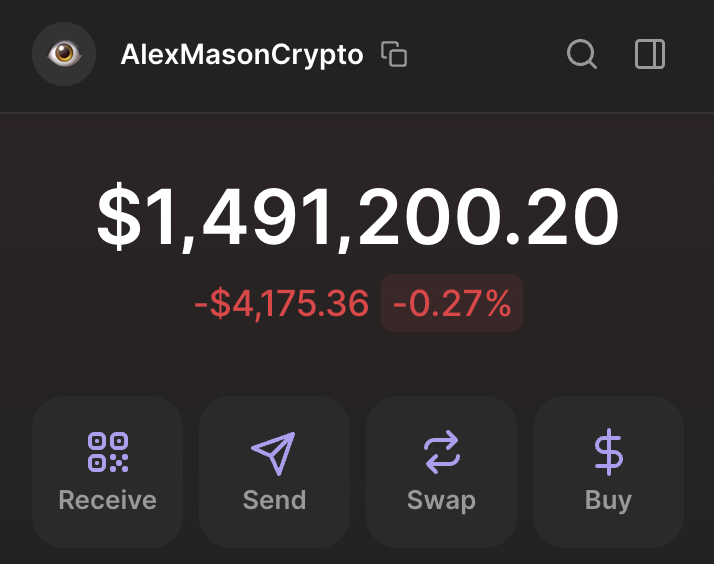🚨 PRESIDENT TRUMP HAS JUST SIGNED A CRYPTO 'GENIUS' ACT.
I'VE STUDIED IT.
HERE'S A BREAKDOWN:

I'm giving away $10,000 to my followers.
To enter:
1) Like + RT the first tweet in this thread.
2) Subscribe to my Telegram Channel:
3) Drop your Solana wallet address in the comments below the thread.
P.S. You must be my follower on X too — I’ll verify all entries.

1 / President Trump just signed the biggest crypto law in U.S. history.
It’s called the GENIUS Act.
Here’s what it actually means—for stablecoins, for crypto, and for the future of the U.S. dollar 👇
2 / Stablecoins are now officially a part of the U.S. financial system.
For the first time ever, there’s a federal law defining how they can be issued, backed, and regulated.
This is the framework crypto has been waiting for.
3 / Not everyone can issue a stablecoin.
Only licensed players can—what the law calls “Permitted Payment Stablecoin Issuers”:
• Banks
• Fintechs with federal charters
• Smaller state-regulated issuers (if under $10B)
No random startup can mint dollars anymore.
4 / Issuers must keep every stablecoin fully backed.
1 coin = $1 in cash or safe assets. No leverage. No funny games.
They also have to:
• Disclose reserves monthly
• Get audited yearly
• Personally certify reports (yes, the CEO signs it)
5 / This isn’t just about rules.
It’s about trust.
With audits, reserve transparency, and government oversight—stablecoins just took a step toward mass adoption.
Banks, fintechs, and even foreign firms will now fight to be the U.S.-approved issuer.
Important: I’m building a private community of the sharpest minds in crypto.
Early plays. Alpha drops. Real research.
100x tokens start here:
Join now. It's free.
6 / What if a stablecoin issuer collapses?
The law protects users.
If the issuer or custodian goes bankrupt, holders get first dibs on the reserves.
That’s a big deal—especially in a post-FTX world.
7 / Foreign companies can issue stablecoins in the U.S.—but only if their home countries have equivalent regulations.
No more regulatory loopholes or shadow operators.
You want access to U.S. markets? You play by U.S. rules.
8 / Timeline?
The law kicks in fully 18 months from now.
That gives regulators time to write the fine print—and gives crypto firms a runway to get compliant.
Expect real enforcement to start in early 2027.
9 / This changes everything for stablecoins:
• No more “gray zone”
• Real legal backing
• Interoperability standards coming
• Treasury demand will likely rise (as reserves are held in T-bills)
This is bullish for USD-backed crypto.
10 / But it’s not perfect.
Some say it gives too much power to big banks.
Others worry about surveillance and overregulation.
And there are ethical questions about firms linked to Trump possibly benefiting.
Still—the foundation is set.
11 / Stablecoins are now a regulated, legal part of U.S. finance.
That’s massive.
This is the U.S. choosing to compete—rather than fight crypto innovation.
You may not like the law. But it’s here. And it’s real.
68.13K
717
The content on this page is provided by third parties. Unless otherwise stated, OKX is not the author of the cited article(s) and does not claim any copyright in the materials. The content is provided for informational purposes only and does not represent the views of OKX. It is not intended to be an endorsement of any kind and should not be considered investment advice or a solicitation to buy or sell digital assets. To the extent generative AI is utilized to provide summaries or other information, such AI generated content may be inaccurate or inconsistent. Please read the linked article for more details and information. OKX is not responsible for content hosted on third party sites. Digital asset holdings, including stablecoins and NFTs, involve a high degree of risk and can fluctuate greatly. You should carefully consider whether trading or holding digital assets is suitable for you in light of your financial condition.

